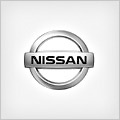
NISSAN Patrol LWB
Generations Timeline, Specs and Pictures
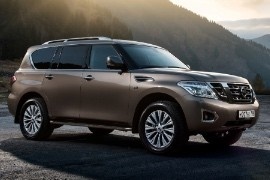
Nissan unveiled a facelift for the Patrol range in 2014, and it brought several updates for it, especially for its look.
On some markets, the sixth generation of the Patrol was the biggest Nissan on the offer. Due to stricter emission regulations and low market potential, the Japanese carmaker dropped it from the offer. The European customers were left behind in teary eyes for the big SUV, while the Australians were unhappy since there was no diesel option. Nevertheless, the Patrol was still one of the best off-road vehicles, and its main playground was the wide-open desert.
The design team tried their best to make the Patrol Y62 look smoother, but it was like trying to reshape a brick with a nail-polisher. Somehow, they succeeded in implementing a new bumper that was curved upward towards the headlights. It’s new LED daytime running lights and the massive, three-parts chromed grille was imposing and resembled the previous Patrol models. The front fenders air-vents from the sides were elongated and still made some people wondering if they were used for something other than design. They could if the owner modified it.
Inside, it was the same large barge with room for up to eight people with impressive headroom, even for the versions fitted with a sunroof. The carmaker did the interior with luxurious trims such as heated and cooled leather seats, wood-trims, and an infotainment system carried over from the Infiniti squad.
Under the hood, Nissan installed only V8 gasoline engines. Their fuel-efficiency was down the drain, but their performances were remarkable, especially for the full-options version that featured a Mercedes-Benz 7-speed automatic (dual-clutch) gearbox.
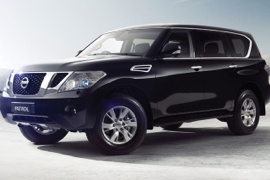
Nisan introduced the sixth generation of the Patrol full-size SUV in February 2010 at a special VIP event in Abu Dhabi, UAE.
The model has grown in size and offers more room for its passengers. Thanks to its renowned reliability, the old 5.6-liter engine offered with the previous generation was still on the list alongside the newer VK56VD unit which has more power thanks to direct gasoline injection and is available with the new 7-speed automatic transmission. This modern drivetrain is also used by its sister model, the Infiniti QX56. All models are assembled in Japan at three different facilities.

The fifth generation of the Nissan Patrol, known as Y61 by the enthusiasts, started its career in 1997 and had received an important update in 2004 both on the look and on the technical part.
Nissan Patrol was one of the most important products ever made by the Japanese company, and the first generation was launched in 1951. In the beginning, it wasn’t named Patrol, but it had the Nissan name stamped on its grille. Its base was a carry-over from the Dodge M37 ¾ truck.
While the Patrol was designed and used mostly in the harshest environments on Earth, the manufacturer didn’t forget to install comfortable suspensions and work on its styling. The rounded edges, big headlights, and in-bumper rear taillights were one of the features of the Patrol Y61.
Inside, there was seating for up to seven passengers for the five-door version, while the three doors featured only five. To improve the inside comfort, the rear suspensions were fitted with coil springs instead of leaf-springs as other off-road vehicles on the market. The Patrol featured amenities such as climate control, leather seats, in-car entertainment units, and sunroof.
Depending on the market, the Patrol featured various engines and transmissions. In Europe, the most common unit was the 3.0-liter turbodiesel mated to a 5-speed transmission fitted as standard. It replaced the previous 2.8-liter unit that was on the Patrol between 1997 and 2003. For the Middle-East versions, a 4.8-liter inline-six unit mated to a 5-speed automatic was available.
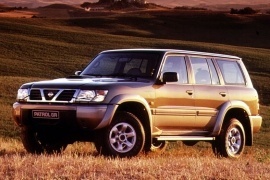
Nissan replaced the fourth generation of the Patrol in 1997 as a 1998 model year and built it with a short or a long wheelbase.
The Patrol began its march on the off-road market in 1951 as the 4W60. It had an uninspired name, but it was based on the Willys CJ-3 Chassis. But that was just the beginning. The Japanese carmaker learned from that vehicle and, most importantly, learned how to design them and transformed the Patrol range into one of the most capable 4x4 vehicles globally.
Despite its size, the long-wheelbase Patrol tried to look civilized. The carmaker designed it with shaved edges and rounded body panels. Despite its new shape, it couldn’t be subtle in the five-door version (actually six). It was still tall and long, hard to drive in town. Its four side doors made the ingress and egress easier for up to seven passengers. It featured two side-hinged, unequal-length doors, and the longer one sported the spare wheel.
The cabin offered room for five occupants, with an option for seven with two folding seats in the trunk area. At the front, Nissan spoiled the occupants with wide, comfortable seats divided by a tall center console where the carmaker added a storage compartment and a large ashtray. On the center stack, the carmaker installed a standard AC unit and a stereo-cassette player.
The most important part of the Patrol’s success was under the body. Its curved, sturdy chassis provided an excellent platform for serious off-roading. In addition, Nissan used live axles both front and rear with coil springs and adjustable stabilizer bars, which increased the suspension travel.
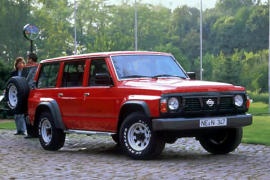
One of the most popular off-road vehicles, the Patrol has been around for more than half a century, having started production in Japan in 1951.
Available with a choice of short or long wheelbase, the Patrol has gained a reputation for its almost unrivaled reliability and durability. The Patrol LWB came with an engine range comprised of a 2.8 Liter Diesel unit and its turbocharged versions. Coupled with a standard four-wheel drive system and a 5 speed manual transmission, the normally aspirated plant developed 92 hp while the turbocharged units shared a power output of 116 hp.























































